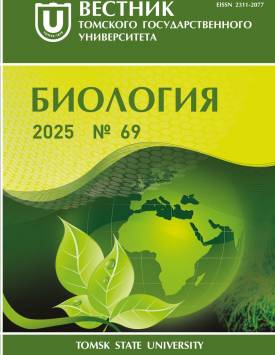Case Report: a novel splice variant of SPAST gene in autosomal dominant spastic paraplegia, type 4
Hereditary spastic paraplegia is a clinically and genetically heterogeneous group of rare neurodegenerative diseases that is characterized by slowly progressive spasticity and weakness in the lower limbs. The prevalence of the disease reaches 1-5 cases per 100,000 populations. Clinically, the disease is divided into pure and complicated spastic paraplegia. Pure spastic paraplegia is mainly characterized by slowly progressive weakness and spasticity of the lower limbs. Complicated spastic paraplegia includes leg spasticity, optic neuropathy, retinopathy, extrapyramidal dysfunction, dementia, ataxia, ichthyosis, mental retardation and deafness. Spastic paraplegia, type 4 onset age ranges from early childhood to 70 years of age. Spastic paraplegia, type 4 is the most common form of autosomal dominant inherited spastic paraplegia, accounting for up to 45% of cases. The spastic paraplegia, type 4 is caused by a heterozygous mutation in the SPAST gene. It is known that pathogenic variants of the SPAST gene tend to cause pure spastic paraplegia, type 4 and are more common in men than in women. The SPAST gene is located on chromosome 2p22.3 and contains 17 exons. The SPAST gene encodes the Spasin protein, a member of the ATPase family of proteins associated with diverse cellular activities (AAA). We describe the case of a 53-year-old man with the main complaints of changes in gait, constant pain in the lower abdomen, as well as pain in the lower back, especially during physical activity. When the patient was 48 years old, he first felt pain in his lower back, which he associated with physical activity, and consulted a neurologist. Based on the results of an examination conducted by a neurologist, degenerative changes in the lumbar spine were identified. He underwent surgical treatment in hospital. The patient with chronic low back pain received an 80 C radiofrequency lesion of the dorsal ramus of the L3-L4 and L4-L5 segmental nerve roots. However, the low back pain persisted. He did not seek medical attention until 2022. The patient returned to the doctor due to persistent back pain. According to the medical data, the neurologists noted this symptom, as well as an increase in muscle tone in 2022. The neurologist diagnosed hereditary spastic paraplegia with walking impairment due to muscle tone. According to the Modified Ashworth Scale, the patient has 3/5 points: significant increase in muscle tone, passive movement difficult. Targeted next-generation sequencing identified a new likely pathogenic splice variant of the SPAST gene - c.1173+1G > С. The variant disrupts a canonical splice site and is therefore predicted to significantly disrupt the protein structure. This nucleotide sequence variant has not been described previously, but a pathogenic one has been described at the same location (c.1173+1G > A). According to ACMG criteria, the variant should be considered as likely pathogenic (PM2, PVS1, PP3). We tested the pathogenicity of the variant using the SpliceAI program. The probability that the position 2:32127023 (= 32127023 - 75) is used as a splice acceptor decreases by delta score 0.93. The probability that the position 2:32127023 (= 32127023 - 1) is used as a splice donor decreases by delta score 0.89, confirming the classification of the variant in the direction of its pathogenicity. The majority of pathogenic variants in a SPAST gene are LOF variants (nonsense mutations; open reading frameshift mutations; changes in the canonical (± 1 or ± 2) splice site nucleotides) leading to NMD (nonsense-mediated decay of mRNA), are located in AAA domain. Splice variants, like all LOF variants, produce a truncated protein and lead to unstable aberrant transcripts that can result in reduced spastin. It is known that the frequency of spastic paraplegia, type 4 splice site mutations (28%) is significantly higher than reported in studies of other human genetic disorders, where 15% of mutations were found to affect mRNA splicing. Thus, this new splice variant expands the range of pathogenic variants leading to spastic paraplegia, type 4, providing an opportunity for further study of the pathogenesis of this disease. The article contains 3 Figures, 9 References. The Authors declare no conflict of interest.
Keywords
hereditary spastic paraplegia, neurodegenerative hereditary diseases, SPAST, next generation sequencing, splicingAuthors
| Name | Organization | |
| Zhalsanova Irina Zh. | Research Institute of Medical Genetics, Tomsk National Research Medical Center of the Russian Academy of Sciences | irina.zhalsanova@medgenetics.ru |
| Fonova Elizaveta A. | Research Institute of Medical Genetics, Tomsk National Research Medical Center of the Russian Academy of Sciences | fonova.elizaveta@medgenetics.ru |
| Valiakhmetov Nail R. | Research Institute of Medical Genetics, Tomsk National Research Medical Center of the Russian Academy of Sciences | nail.valiakhmetov@medgenetics.ru |
| Gosudarkina Sofia N. | Research Institute of Medical Genetics, Tomsk National Research Medical Center of the Russian Academy of Sciences | sophia.gosudarkina@medgenetics.ru |
| Petlina Elizaveta Yu. | Research Institute of Medical Genetics, Tomsk National Research Medical Center of the Russian Academy of Sciences | elisaveta.petlina@medgenetics.ru |
| Seitova Gulnara N. | Research Institute of Medical Genetics, Tomsk National Research Medical Center of the Russian Academy of Sciences | gulnara.seitova@medgenetics.ru |
| Stepanov Vadim A. | Research Institute of Medical Genetics, Tomsk National Research Medical Center of the Russian Academy of Sciences | vadim.stepanov@medgenetics.ru |
| Skryabin Nikolay A. | Research Institute of Medical Genetics, Tomsk National Research Medical Center of the Russian Academy of Sciences | nikolay.skryabin@medgenetics.ru |
References

Case Report: a novel splice variant of SPAST gene in autosomal dominant spastic paraplegia, type 4 | Vestnik Tomskogo gosudarstvennogo universiteta. Biologiya - Tomsk State University Journal of Biology. 2025. № 69. DOI: 10.17223/19988591/69/10
